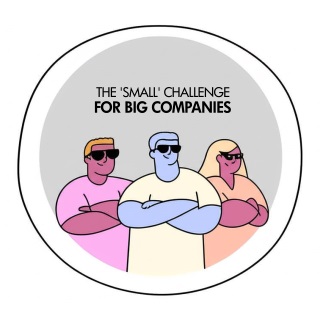 This HBR article highlights a compelling asymmetry in team dynamics: large teams excel at development and deployment, while small teams are better suited for disruption. Large teams execute. Small teams disrupt. The former march in formation; the latter think in rebellion.
This HBR article highlights a compelling asymmetry in team dynamics: large teams excel at development and deployment, while small teams are better suited for disruption. Large teams execute. Small teams disrupt. The former march in formation; the latter think in rebellion.
Anecdotally, that rings true. Smaller teams, leaner in structure and tighter in cohesion, thrive at birthing radical ideas and reframing paradigms. They move quickly because they aren’t bogged down by bureaucracy and status meetings. They share context without memos, pivot without permission, and fail without fanfare. Their edge is subtraction: less red tape, fewer egos, and, mercifully, no corporate pep talks. That’s why Amazon swears by the “two-pizza team” rule—agility thrives in small bites.
Large teams thrive at refinement. They have the muscle to scale, test, and adapt ideas for customers. Their access to resources, infrastructure, and markets gives them an advantage in execution.
Disruption favors the quiet hum of concentrated minds, not the roar of crowded rooms. That’s why forward-thinking companies seed Skunkworks, nimble innovation cells within large organizations, designed to marry the agility of small teams with the power of big ones. A lightweight alternative is the ad hoc hackathon: short, focused bursts of innovation where small teams or cross-company partnerships can rapidly prototype with minimal overhead.

 What struck me most in Penang is how Confucian values—often dismissed as rigid—are anything but. They
What struck me most in Penang is how Confucian values—often dismissed as rigid—are anything but. They  Starbucks has long been celebrated for its progressive image and support of social justice causes. But when it comes to unionization and better benefits, the company’s actions tell a different story. Internal policies—like
Starbucks has long been celebrated for its progressive image and support of social justice causes. But when it comes to unionization and better benefits, the company’s actions tell a different story. Internal policies—like 
 As this case study illustrates, the concept of humility in Asian cultures may
As this case study illustrates, the concept of humility in Asian cultures may  From
From 
.jpg)